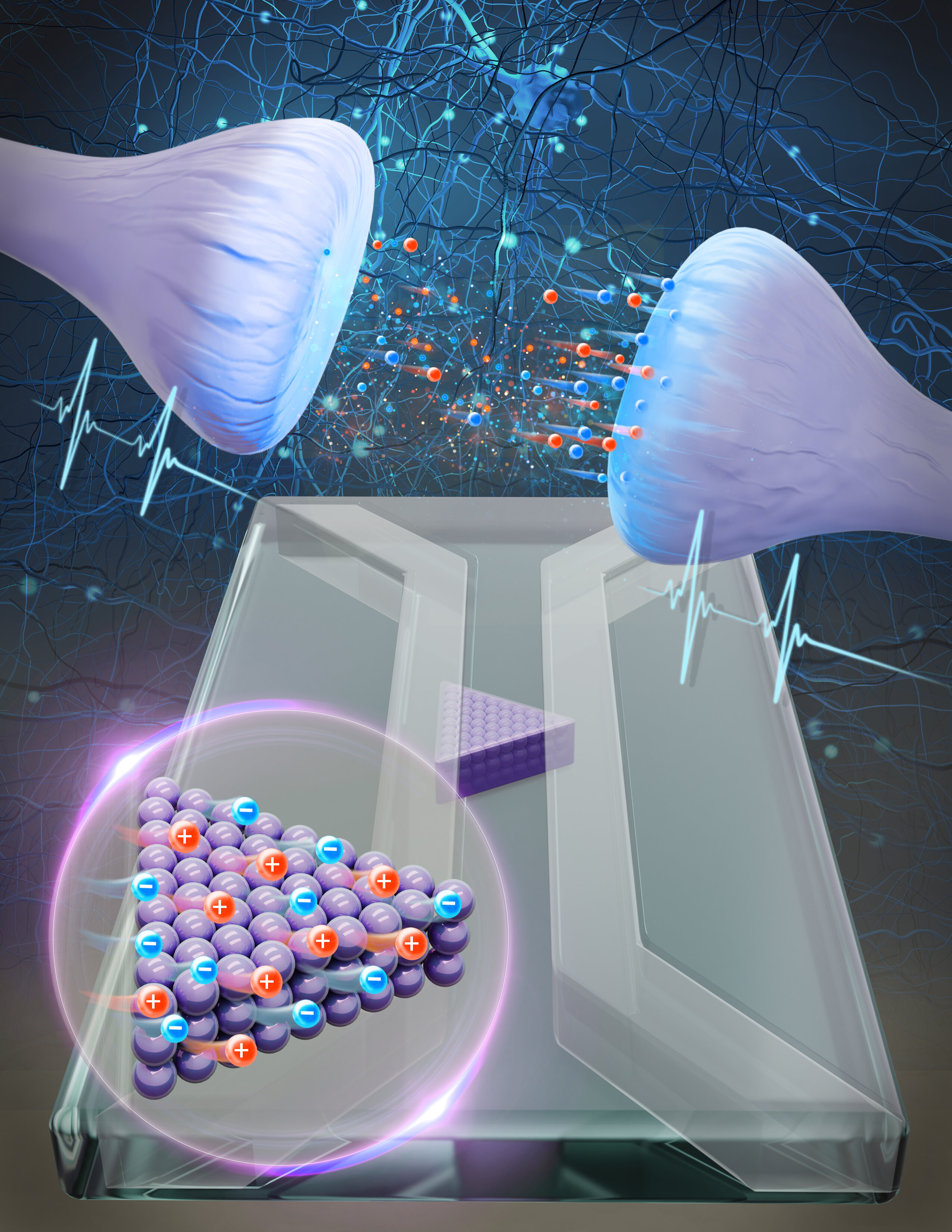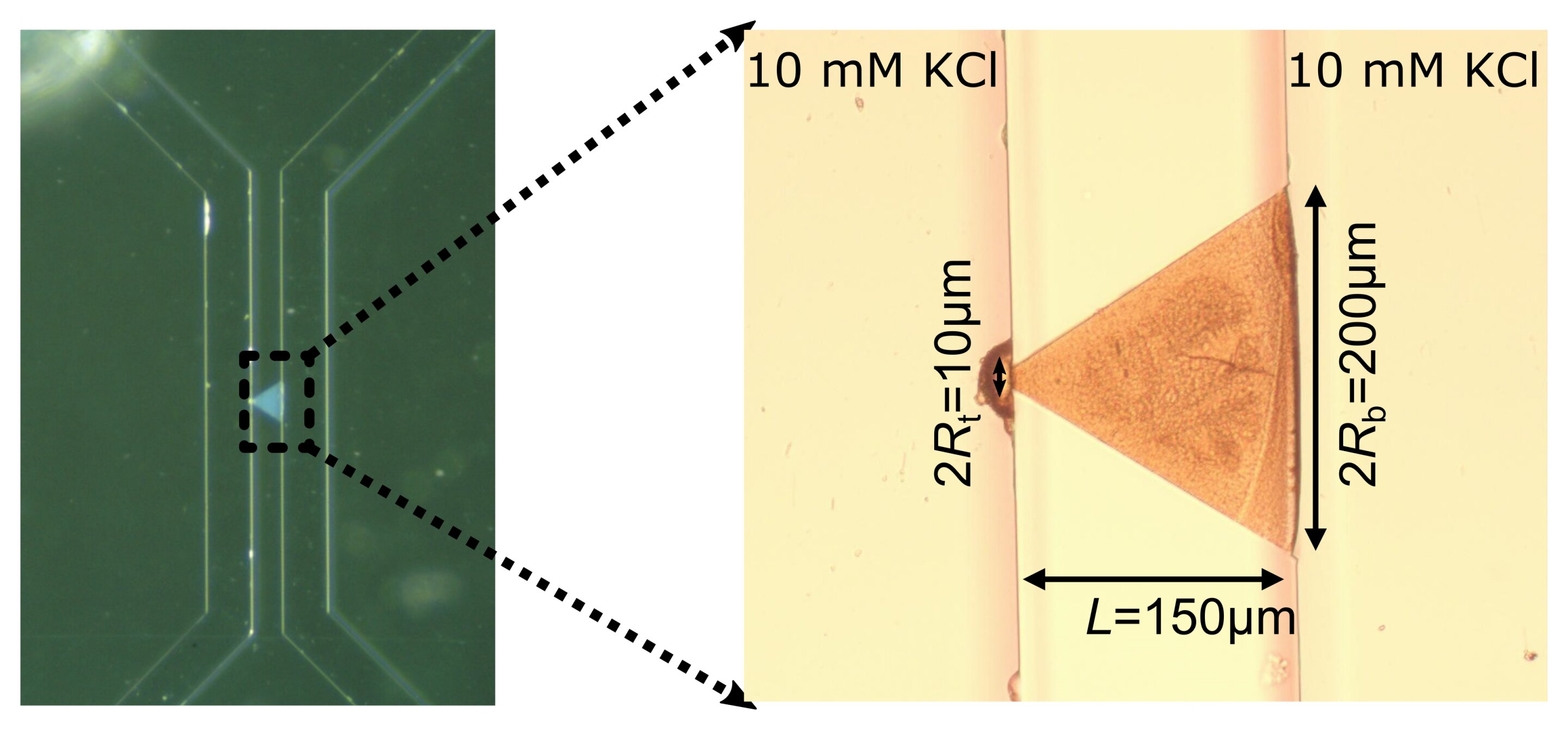Artificial Synapse: Researchers Replicate the Brain for the First Time
Published by Redbran,
Source: Proceedings of the National Academy of Sciences
Other Languages: FR, DE, ES, PT
Source: Proceedings of the National Academy of Sciences
Other Languages: FR, DE, ES, PT
Follow us on Google News (click on ☆)
This innovative device offers a new perspective on computers inspired by the human brain, which could one day use similar methods to process information more efficiently and economically.

Graphical representation of the artificial synapse composed of colloidal spheres with nano-channels between them.
Credit: University of Utrecht
The publication in the journal Proceedings of the National Academy of Sciences details how this synapse, measuring about 0.006 by 0.008 inches (150 by 200 micrometers), successfully mimics the functions of a biological synapse.
This system relies on an iontronic memristor, which, under the effect of electrical impulses, allows ion migration in a cone-shaped microchannel filled with a salt and water solution. The ion concentration varies according to the intensity of the impulses, thus changing the conductivity of the channel, reflecting the way synapses strengthen or weaken neural connections.
The duration for which the concentration changes persist depends on the length of the channel, suggesting that it is possible to design custom channels to retain and process information for varying durations, similar to the synaptic mechanisms in our brain.
Tim Kamsma, a Ph.D. student at the Institute of Theoretical Physics and Mathematics at Utrecht, and lead author of the study, shares his enthusiasm: "We have proven for the first time that it is possible to replicate neuronal behavior using water and salt, the same mediums as the brain."

Microscopic image of the artificial synapse.
Credit: University of Utrecht
This promising development marks an important step towards potentially more efficient and less energy-intensive computing systems. Although this field, iontronic neuromorphic computing, is still in its infancy, the implications of such research could revolutionize how machines process information in the future.